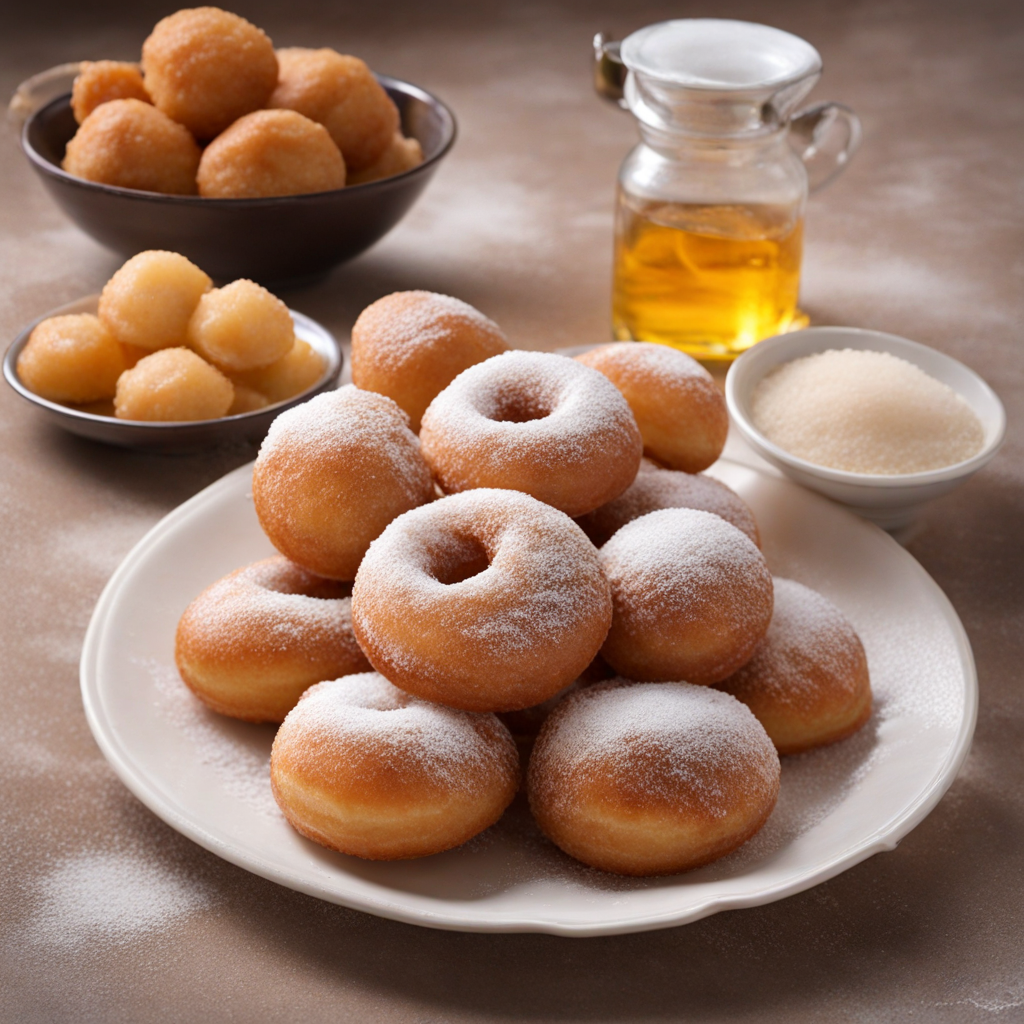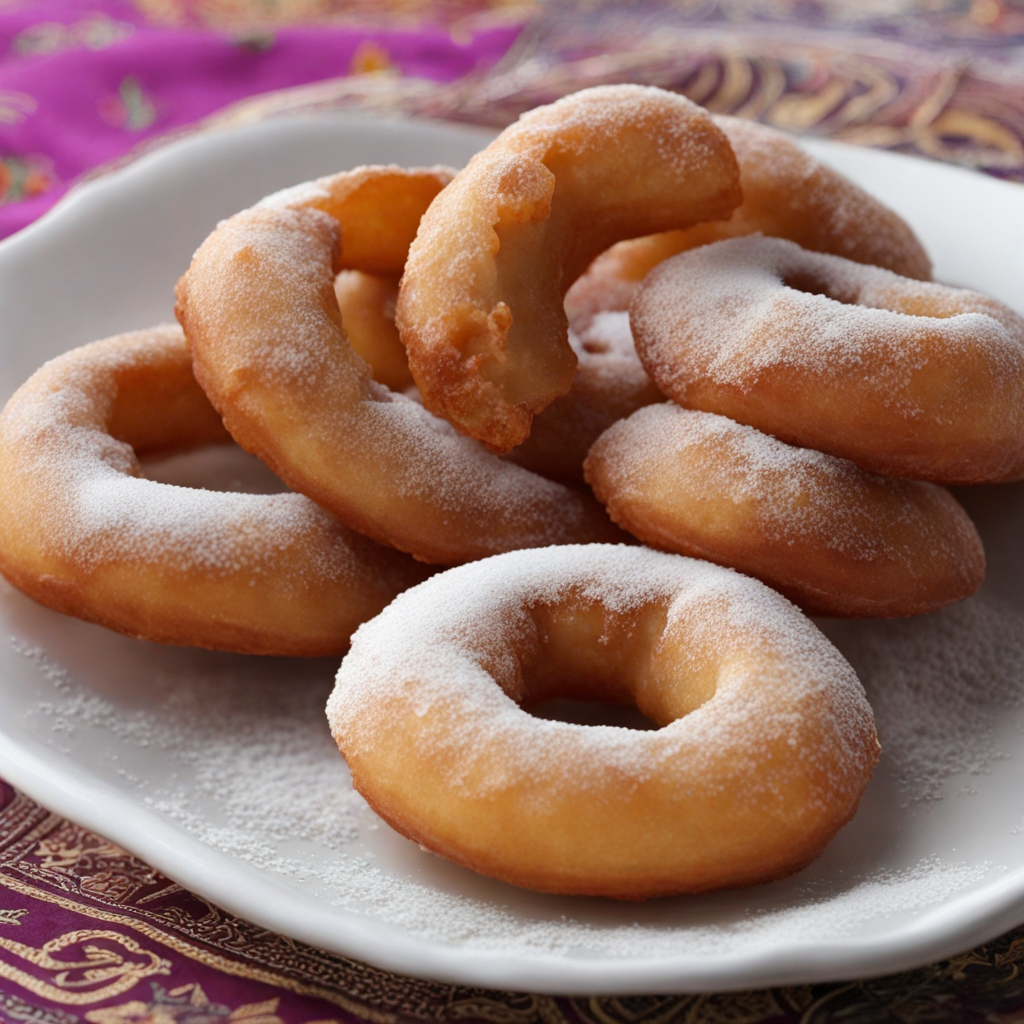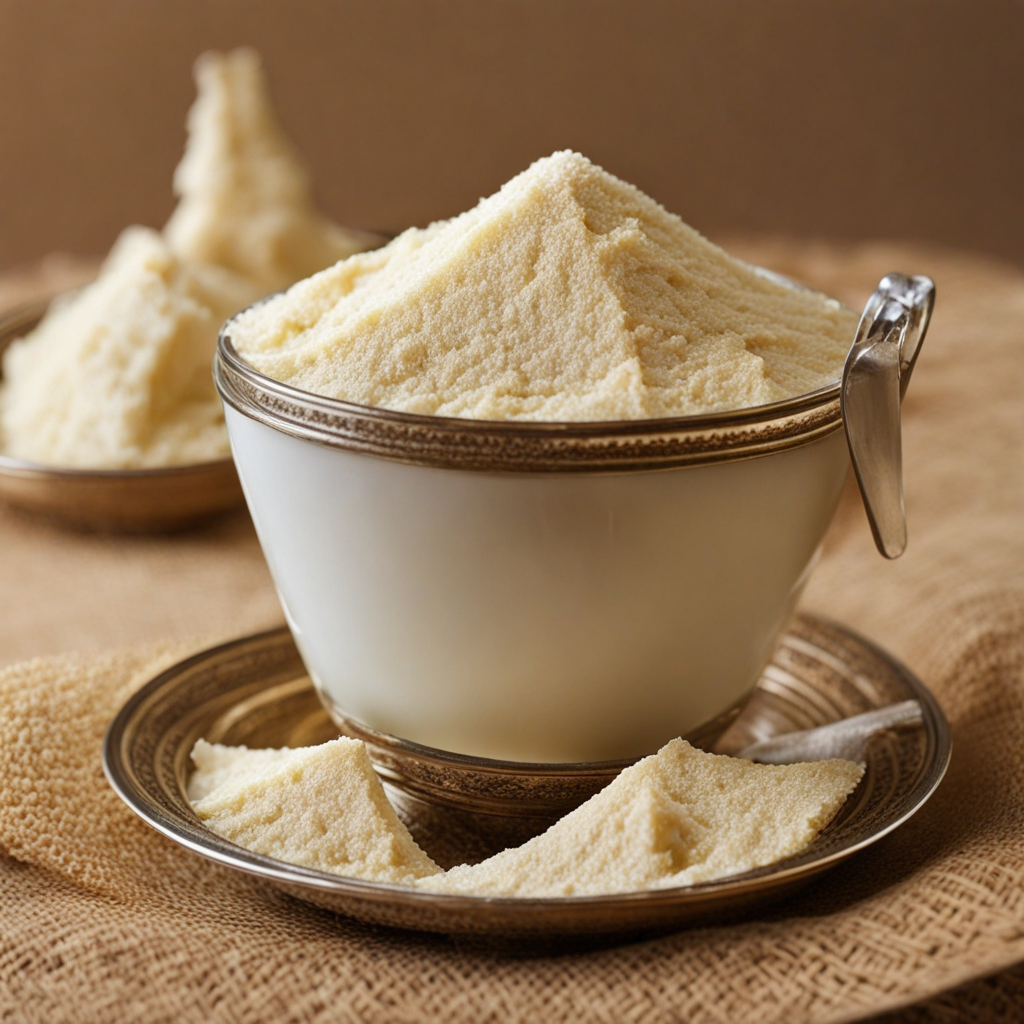Zalabia
Zalabia is a delightful Sudanese treat that offers a unique blend of flavors and textures, making it a must-try for anyone looking to expand their culinary horizons. These sweet, deep-fried pastries are made from a simple batter of flour, water, and yeast, which is allowed to rise before being shaped into intricate spiral or circular forms. Once fried to a golden-brown perfection, Zalabia are often dusted with powdered sugar or drizzled with honey, creating a delightful contrast between the crispy exterior and the soft, airy interior. The sweetness combined with the lightness of the dough makes them an irresistible indulgence. The preparation of Zalabia is a cherished tradition in Sudanese culture, often enjoyed during festive occasions and gatherings. The frying process not only gives them their signature texture but also infuses them with a rich, comforting aroma that fills the air. When served warm, they are at their best, offering a satisfying crunch with every bite while the sweetness envelops the palate. Some variations may include flavorings such as cardamom or vanilla, enhancing the taste profile and adding a fragrant note that complements the dessert. In Sudan, Zalabia is typically enjoyed alongside a cup of tea or coffee, making it a perfect accompaniment for social gatherings or family celebrations. The combination of sweet and savory makes them versatile, as they can be served as a dessert or a snack at any time of day. Whether you’re experiencing them for the first time at a bustling market or sharing them with friends at home, Zalabia promises a delightful culinary adventure that highlights the rich flavors and traditions of Sudanese cuisine.
How It Became This Dish
The History of زلابية (Zalabia) in Sudan: A Sweet Journey Through Time #### Origins of Zalabia Zalabia, a beloved sweet treat in Sudan, has deep roots in Middle Eastern and North African culinary traditions. Its origins can be traced back to ancient times when similar fried dough confections were made in various forms across the region. The word “zalabia” likely derives from the Arabic “zalab,” which means “to dip,” referencing the way the dough is dipped into hot oil for frying and then often coated in syrup or sugar. In Sudan, zalabia is not merely a dessert; it is a symbol of hospitality and community. The treat is particularly popular during festive occasions, especially during Ramadan, when families gather to break their fast with a variety of dishes, zalabia among them. The sweet, crispy dough, often drizzled with syrup or honey and sometimes flavored with rose water or cardamom, embodies the warmth and generosity of Sudanese culture. #### Cultural Significance Zalabia holds a special place in the hearts of many Sudanese. Its preparation is often a communal activity, bringing families and friends together to share in the joy of cooking. The process of making zalabia can be seen as a rite of passage for many young Sudanese women, who learn the recipe from their mothers and grandmothers, ensuring the continuity of this cherished culinary tradition. During Ramadan, zalabia takes on an even deeper significance. It is not only served as a sweet treat to break the fast; it also symbolizes abundance and gratitude. Families often prepare large batches to share with neighbors and friends, reinforcing social bonds and community ties. This communal aspect of zalabia emphasizes the importance of togetherness in Sudanese culture. Zalabia is also featured during other celebrations, such as weddings and Eid festivities, where it is often served alongside traditional dishes like kisra (a type of sourdough flatbread) and various stews. Its presence at these gatherings underscores its role as a symbol of joy and celebration. #### Development Over Time The evolution of zalabia reflects broader trends in Sudanese society and its interactions with neighboring cultures. As trade routes expanded and cultural exchanges occurred, the recipe for zalabia absorbed influences from various culinary traditions. The introduction of sugar, for example, transformed zalabia from a simple fried dough into a sweet delicacy that could be enjoyed by all. In the early 19th century, with the rise of the cotton industry and increased trade with the Ottoman Empire, Sudanese cuisine began to incorporate more sugar and spices, enriching the flavor profiles of traditional dishes. Zalabia was no exception; the addition of ingredients like cardamom and rose water became more common, giving the treat a unique Sudanese twist. During the colonial period in the late 19th and early 20th centuries, the integration of European culinary practices also influenced the preparation and presentation of zalabia. While traditional methods remained prevalent, new techniques were introduced, leading to variations in texture and flavor. This adaptability has allowed zalabia to remain relevant through changing times, appealing to both traditionalists and modern tastes. In recent decades, as Sudan has faced political and economic challenges, the significance of zalabia has only grown. It has become a symbol of resilience and cultural identity for many Sudanese. Street vendors selling zalabia can be found in bustling markets and during public celebrations, making this sweet treat an accessible delight for people from all walks of life. The globalization of cuisine has also impacted zalabia. As Sudanese immigrants and diaspora communities have settled in different parts of the world, they have brought this beloved sweet with them. Zalabia has found its way into various international food festivals and cultural events, introducing new audiences to its rich flavors and textures. #### Preparing Zalabia: A Culinary Tradition Making zalabia is an art that combines skill with tradition. The basic ingredients include flour, water, yeast, and sugar, forming a dough that is allowed to rise before being shaped into small, circular pieces. The dough is then deep-fried until it turns golden brown and crispy. Once removed from the oil, zalabia is often dipped in a simple syrup made from sugar and water, sometimes flavored with lemon or orange blossom water, giving it a sweet, aromatic finish. The process of making zalabia can vary from one household to another. Some families prefer to drizzle syrup over the zalabia, while others may choose to soak the fried dough in syrup for a richer sweetness. Toppings can also vary, with crushed nuts or coconut flakes sometimes sprinkled on top for added texture and flavor. #### Conclusion Zalabia is more than just a sweet treat; it is a culinary emblem of Sudan’s rich cultural tapestry. Its origins, steeped in history, reflect the convergence of various culinary traditions that have shaped Sudanese society over centuries. The communal aspect of its preparation and consumption emphasizes the importance of family and community in Sudanese culture, making zalabia a symbol of togetherness and celebration. As the world becomes more interconnected, zalabia continues to evolve, adapting to new influences while retaining its traditional roots. This sweet delight remains a cherished part of Sudanese identity, serving as a reminder of the resilience and warmth of a culture that values hospitality and community. In every bite of zalabia, one can taste the history and traditions of Sudan, a sweet journey through time that connects generations and brings people together in joy and celebration.
You may like
Discover local flavors from Sudan







